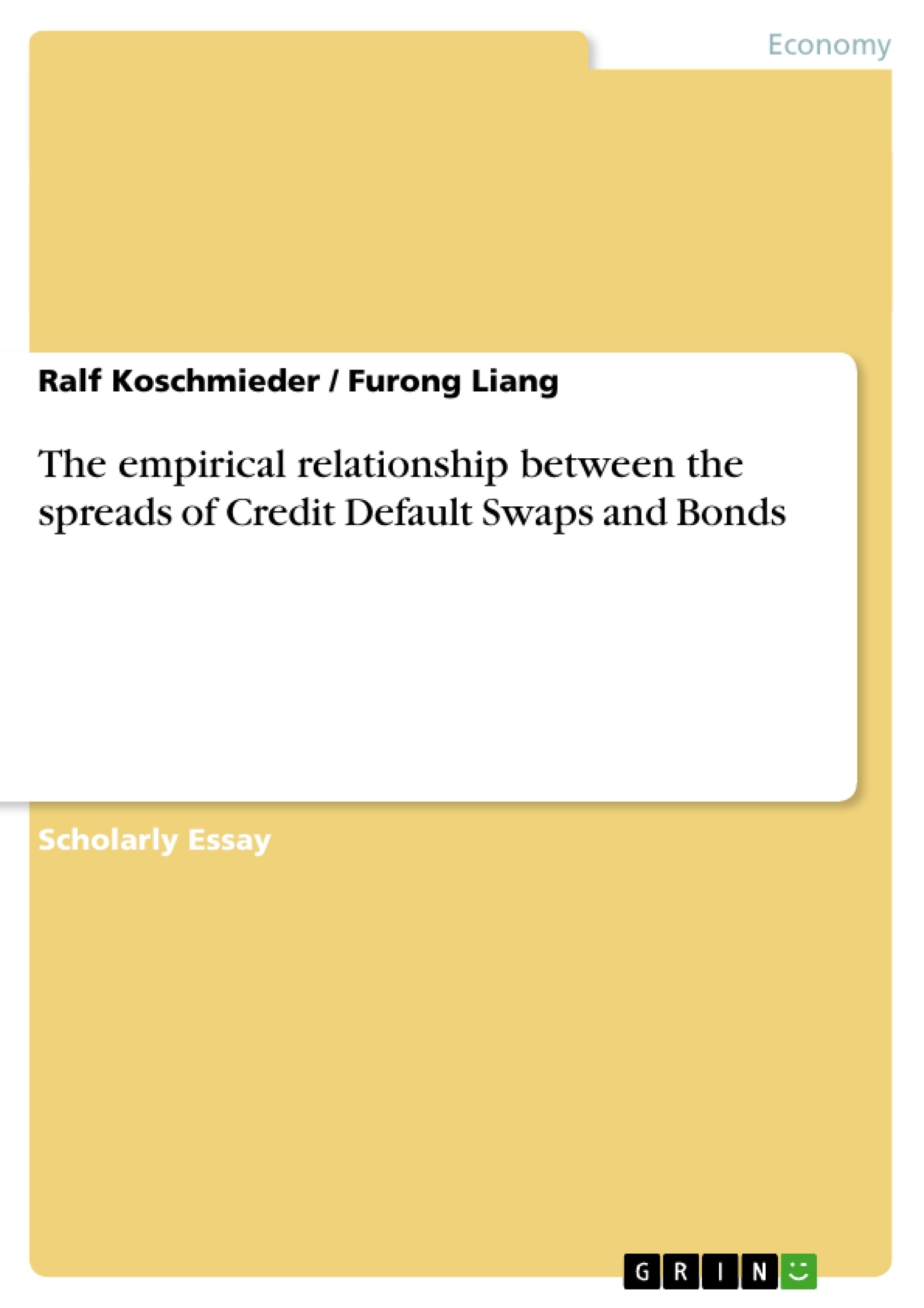Warren Buffet, the world’s richest man, once said that derivatives are financial “weapons
of mass destruction.” a term popularized by George W. Bush to describe nuclear arms.
Indeed financial derivatives have a far greater impact on the market than their underlying
due to their leverage effect. And the most popular and important credit derivatives
nowadays are credit default swaps with a current notional value of over 60 trillion US
dollars according to ISDA 1 (International Swaps and Derivatives Association) and 58
trillion US dollars according to BIS 2 (Bank for international settlement) respectively. That
is more than the whole world’s gross domestic product in the same year! 3
This paper examines the empirical relationship of CDS premium and credit spread by
testing on their theoretical equivalence derived by Duffie (1999). It begins with an
overview of CDS followed by the theoretical framework. The analysis starts with
explanation of testing methods and description of data. After confirming the existence of
the basis spread, this paper goes on to analyse the interactions of CDS spread and Bond
spread using econometrics methods like Cointegration and Granger Causality tests. Also
examined is the leadership of price discovery process between CDS market and traditional
bond market.
Inhaltsverzeichnis (Table of Contents)
- The overview of credit default swaps
- The development of credit default swaps
- Structure of Credit Default Swaps
- Regulation of CDS...
- Participants and usage of CDS.
- Theoretical framework ..
- valuation of credit default swap.
- No-arbitrage approach
- Equivalence relationship between CDS spread and bond spread
- Methods of econometrics for the analysis..
- Explaining the data
- Bond Data selection criteria
- Risk free interest rates selection criteria.
- Empirical analysis ..
- Basis spread
- Average basis spread.
- Factors of the basis spread
- Test on the existence of basis.
- Long-term relationship between the spread on both markets.
- Basis spread
- Concluding comments.
Zielsetzung und Themenschwerpunkte (Objectives and Key Themes)
This paper analyzes the empirical relationship between Credit Default Swaps (CDS) premiums and credit spreads, drawing on theoretical equivalence principles established by Duffie (1999). The primary objectives are to:- Provide a comprehensive overview of CDS and their evolution.
- Outline the theoretical framework underpinning the relationship between CDS spreads and bond spreads.
- Conduct an empirical analysis of the data using econometric methods to assess the relationship between CDS spreads and bond spreads.
- Investigate the existence and implications of basis spread, a discrepancy between CDS and bond spreads.
- Examine the leadership of price discovery between the CDS market and the traditional bond market.
Zusammenfassung der Kapitel (Chapter Summaries)
- The overview of credit default swaps: This chapter introduces credit default swaps, outlining their development, structure, regulation, and participants. It emphasizes the rapid growth of the CDS market, particularly in the United States and Europe.
- Theoretical framework: This chapter delves into the theoretical relationship between CDS spreads and bond spreads. It covers key concepts like no-arbitrage pricing, the equivalence relationship, and the methods of econometrics used in analyzing the data.
- Explaining the data: This chapter details the data used in the empirical analysis, focusing on the criteria for selecting bond and risk-free interest rate data.
- Empirical analysis: This chapter presents the results of the empirical analysis, examining the basis spread, its factors, and the existence of a long-term relationship between CDS spreads and bond spreads.
Schlüsselwörter (Keywords)
The core concepts and themes of this paper revolve around credit default swaps (CDS), bond spreads, basis spread, price discovery, and econometric analysis, particularly using methods such as cointegration and Granger causality tests. This research aims to understand the empirical relationship between CDS premiums and credit spreads, contributing to a deeper understanding of these financial instruments and their role in the market.- Citation du texte
- Ralf Koschmieder (Auteur), Furong Liang (Auteur), 2010, The empirical relationship between the spreads of Credit Default Swaps and Bonds, Munich, GRIN Verlag, https://www.grin.com/document/149685



